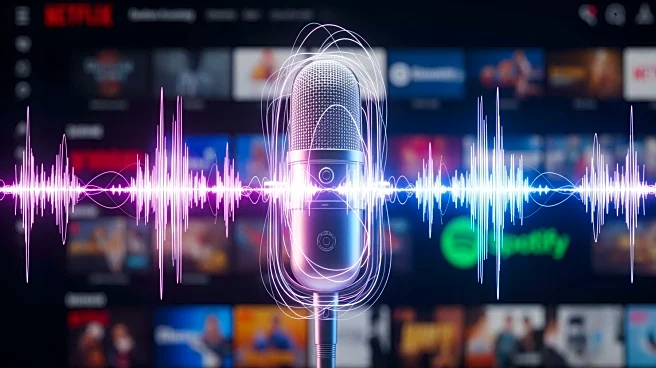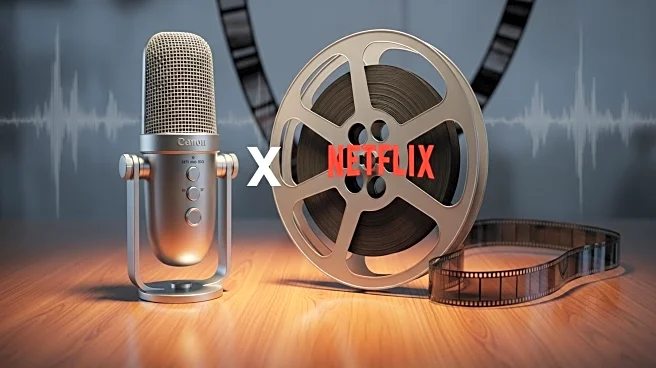What's Happening?
Netflix and Spotify have announced a partnership to bring video podcasts to streaming, starting in early 2026. This collaboration aims to merge the worlds of streaming and podcasting by offering a curated
selection of Spotify's top video podcasts on Netflix. The initiative includes popular shows from Spotify Studios and The Ringer, such as The Bill Simmons Podcast and Serial Killers. The partnership seeks to make podcasts as engaging as TV, expanding both platforms' reach into various genres like sports, culture, lifestyle, and true crime.
Why It's Important?
This partnership represents a significant shift in content distribution, as Spotify extends its reach beyond its platform and Netflix diversifies its offerings with talk-driven, low-cost programming. By integrating video podcasts, Netflix can enhance its documentary and talk show library, attracting new audiences and retaining existing subscribers. For Spotify, this collaboration opens access to Netflix's global audience, potentially increasing podcast discovery and listener engagement. The move could influence the streaming industry's approach to content creation and distribution, impacting media consumption patterns.
What's Next?
The rollout of video podcasts on Netflix is scheduled to begin in the US early next year, with plans to expand to additional markets in 2026. As more shows and genres are added, both companies will likely monitor audience reception and engagement metrics to refine their offerings. The partnership may prompt other streaming services to explore similar collaborations, potentially reshaping the landscape of digital media consumption.
Beyond the Headlines
The integration of video podcasts into streaming platforms could lead to new content creation opportunities, encouraging creators to produce visually engaging podcasts. This development may also raise questions about the future of traditional audio-only podcasts and their place in the evolving media ecosystem. The partnership highlights the growing convergence of different media formats, reflecting broader trends in digital content consumption.











